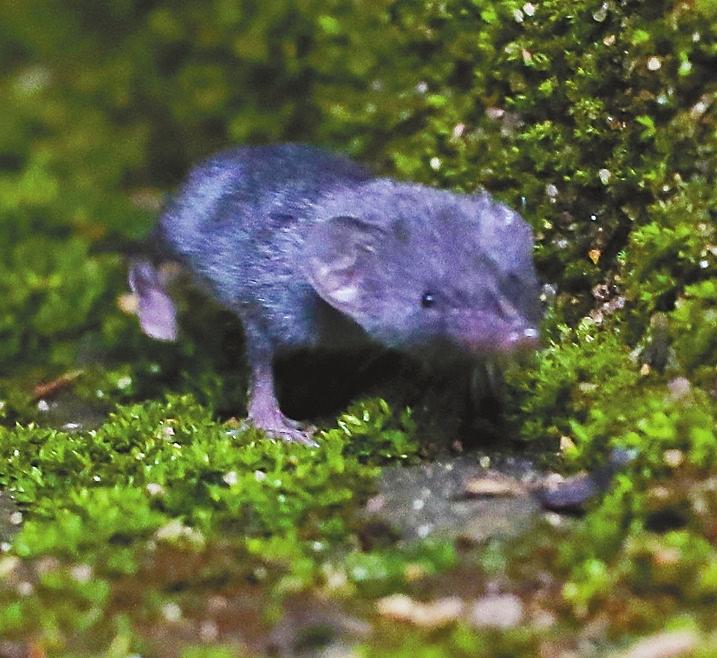
Worldwide, only a tiny percentage of all the animal species are mammals, and Shenzhen is not an exception to that proportional distribution. Although scarce and more challenging to find or observe, mammals do live around us and play a significant role in the complex dynamics of Shenzhen’s ecosystems. One unique mammal species in the city is the Asian house shrew (Suncus murinus), a small animal often confused with a tiny mouse at first sight. This fascinating animal has a long pointed nose, a dark gray coloration on its short velvet-like fur, and short legs and tail. They are relatively small, growing to only 15 centimeters in length, including the tail.They are swift when running for shelter or escaping a predator. An interesting characteristic of the Asian house shrew is the presence of a large scent gland in males that gives off a powerful smell, used mainly to keep predators away and communicate with other individuals of their kind. This shrew is thought to have only one mate during their reproductive periods, which can happen at any time of the year; mating can induce ovulation in females. Both parents will help collect materials and build nests, where females give birth to eight shrews per litter that will be ready to leave the nest in about three weeks. Newborns will be ready to start a new reproductive cycle in a strikingly short 35 days, so their population could quickly go out of control if it were not for their main predator, the snake. House shrews are nocturnal animals mainly feeding on insects. They predate voraciously and therefore help keep insect populations under control. They are opportunistic and reportedly feed on plants too, or on any food remnants that come their way. Since these animals live in human settlements, they often feed on human food leftovers. House shrews are considered an invasive species, and their reproduction rates are impressive. However, they are of importance to the city’s dynamics due to their ability to control pests and insect populations. If we want to protect our ecosystems, it’s necessary to maintain a healthy proportion of all species, so that the circle of life will continue rolling, and all the species of our city will coexist in a beautiful balance the way it should be. | 
